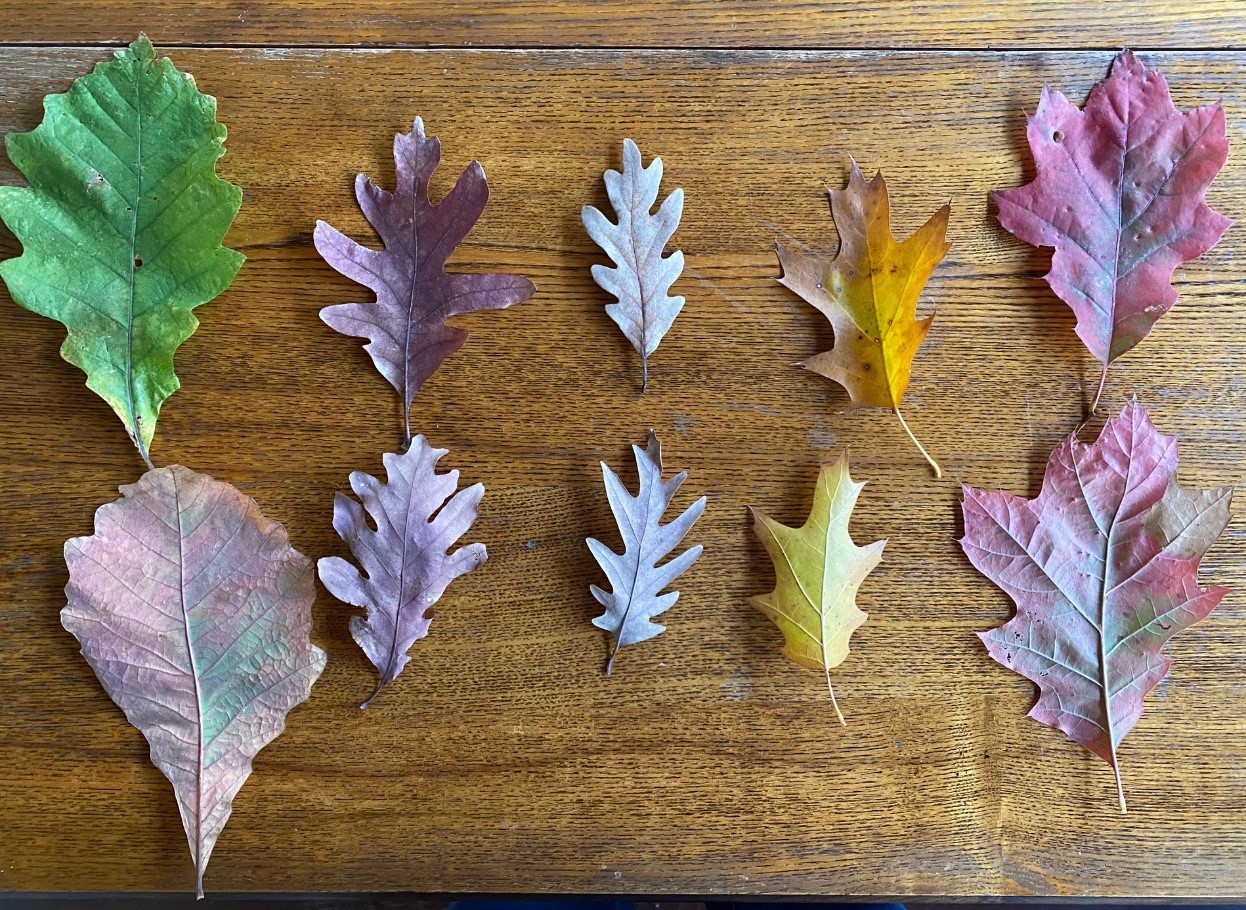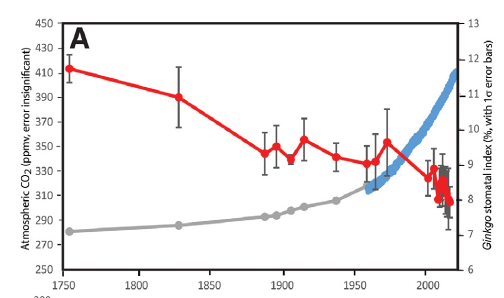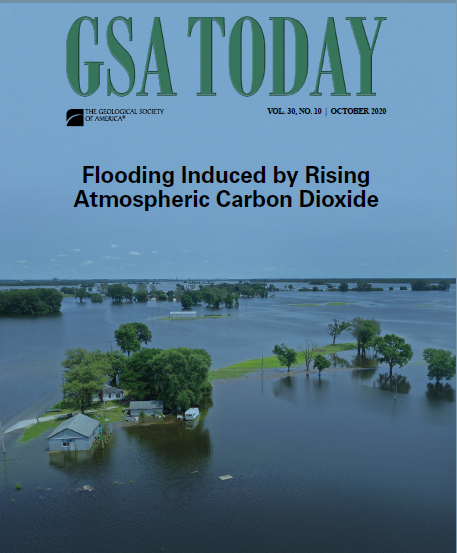

A friend and I were “botanizing” on our Sunday walk. It turns out I have at least 5 kinds of oak, for which I am exceedingly grateful. Some types are not faring well, weakened by the wet summers and succumbing to fungal disease. I hold out hope that the variety present will make it possible for others to hang on during this climate transition.
What she and I could not see was the density of pores or stoma on the oak leaves. Gases move both in and out but the stoma density is set in the spring by the carbon dioxide level in the atmosphere when photosynthesis begins.
If we had been tracking this, we would have noticed that stoma density on oak leaves has decreased steadily. Ginkgo leaves have a particularly long record and show a 29% decrease since 1754 (Retallack and Conde, 2020).

Every year at about this time we can also expect to see a little bounce in stream flow. That is because water vapor that had been transferred through the stoma during the growing season simply runs off after the leaves die.
It is striking how overall stream flow in agricultural watersheds of the Midwest has increased. It results from a combination of factors that are driving us in the same direction: drainage of land for agriculture, more intense rain events, more acres of annual plants with less ability to transpire (Schottler et al. 2013) and now add to that, lower and lower stoma density as carbon dioxide rises.

To offset a future of flooding, we are promoting water storage in the Minnesota River watershed. A bill piloting a program to accomplish this came very close to passing last session. We will be working for its reintroduction and garnering support for its eventual passage in the upcoming session.
– Carrie Jennings, research and policy director
Notes:
Retallack, G. J., and G.D. Conde, 2020, Flooding Induced by Rising Atmospheric Carbon Dioxide, GSA Today, V. Volume 30, Issue 10 (October 2020) https://doi.org/10.1130/GSATG427A.1
Schottler Shawn P., J. Ulrich, P. Belmont, R. Moore, W. Lauer, D. R. Engstrom J. E. Almendinger, 2013. Twentieth century agricultural drainage creates more erosive rivers, Hydrologic Processes, vol. 28, issue 4, pp. 1951-1961. DOI: 10.1002/hyp.9738